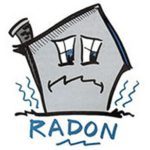
Radon is a colorless, odorless gas that is known to cause cancer. Radon was one of the first radioactive elements discovered on the periodic table. And while we have known about radon for many decades, it is very important to test for.
Should you test for radon?
Testing is the only way to know if you and your family are at risk from radon. EPA and the Surgeon General recommend testing all homes below the third floor for radon.
You can fix the Problem.
Radon reduction systems work and the are not to costly. Some radon reductions systems can reduce radon levels in your home by up to 99%. Even very high levels can be reduced to acceptable levels.
How does Radon get into your house?
Radon is a radioactive gas. Its come from the natural decay of uranium that is found in nearly all soils. It typically moves up through the ground to the air above and into your home through cracks and holes in the foundation. Your home traps radon inside, where it can build up. Any home may have a radon problem. This means new and old homes, well-sealed and drafty homes, and homes with or without a basement.
Radon Testing is recommended by the EPA.
- If you are buying or selling your home, have it tested for Radon
- For a new home, ask if radon-resistant construction features were used and if the home has been tested.
- Fix the home if the Radon level is 4 picocuries per liter, or pCi/L, or higher
- Radon levels less than 4 pCi/L still pose a risk, and in many cases, may be reduced.
- Take steps to prevent device interference when conducting a radon test.


